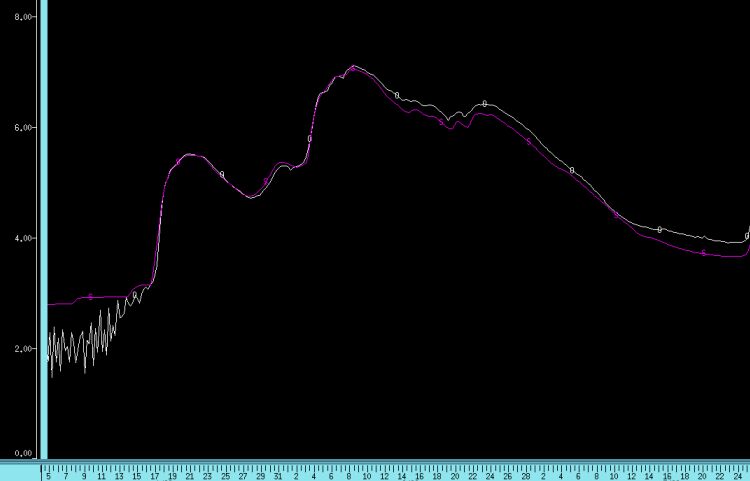
| glossary | menu | Normal | lg | hc | 9.) Fluvial Geomorphological Applications in River Forecasting > Modeling Floods and Under Estimating High Flow Recession |
| < Previous | 1 | 2 | 3 | 4 | 5 | 6 | 7 | 8 | 9 | 10 | 11 | 12 | 13 | 14 | 15 | Next > |
Modeling Floods and Under Estimating High Flow Recession

Computer models based on mathematical equations of hydrological phenomenon, such as rainfall runoff and river routing, are regularly used by operational forecasters. Many earlier models were predominantly a collection of empirical equations that were calibrated to regional river needs, but did not translate well to other basins or non-calibrated conditions. Current model development focuses on mechanistic equations that generate more parameters and are more complex to parameterize, but theoretically can match the physics of the system. Many of these mechanistic models are a blend of empirical and physically based formulations.
Flood routing using the standard Lag / K (or Lag and K) routing method is performed by the CNRFC. The stage versus time plot is shown in this image for Yolo Bypass at Lisbon. At higher flows during the recession the observed discharge time series, in violet color, outpaced (was quicker than) the modeled river flood recession, in white. The incongruence in the stage hydrograph recession was likely due to some coastal geomorphological influences and weir controls.
Image courtesy of NOAA
| < Previous | 1 | 2 | 3 | 4 | 5 | 6 | 7 | 8 | 9 | 10 | 11 | 12 | 13 | 14 | 15 | Next > |